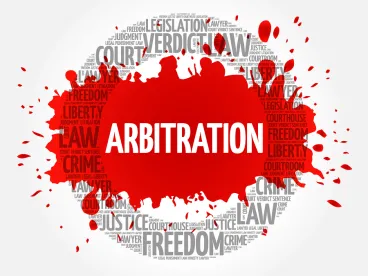In a big win for the tech industry and app developers, and for other companies seeking to enforce arbitration agreements through web-based interactions, last week the Second Circuit Court of Appeals held that the plaintiff in a putative class action entered into an enforceable arbitration agreement when he registered for Uber Technology, Inc.’s (Uber) app. See Meyer v. Uber Technologies, Inc., et al., Nos. 16-2750-cv, 16-2752-cv (2d Cir. Aug. 17, 2017). The Uber app publishes Uber’s terms and conditions, which contain a mandatory arbitration clause, via hyperlink on the app’s registration screen. The lower court had concluded that Uber’s notice of its terms of service was not reasonably conspicuous to users, and thus, users did not unambiguously assent to a mandatory arbitration provision contained in those terms. Id. The Second Circuit disagreed. It held that Uber’s publication of its terms and conditions via a conspicuous hyperlink put users on inquiry notice of the relevant terms, including the mandatory arbitration provision. In reversing the lower court, the Second Circuit did, however, remand the case so that the lower court could determine whether Uber had waived its right to arbitration by engaging in discovery in the case.
In the underlying case before the United States District Court for the Southern District of New York, the plaintiff, on behalf of a putative class, alleged that Uber and its former chief executive officer engaged in illegal price fixing. Uber moved to compel arbitration based on an arbitration provision that the plaintiff agreed to when he registered on Uber’s mobile app. Op. at 2. The lower court denied Uber’s motion, and ruled that the plaintiff did not have reasonably conspicuous notice of Uber’s terms of service (containing the mandatory arbitration provision), and therefore, the plaintiff did not agree to arbitrate his claims. Op. at 9. In staying the lawsuit pending Uber’s appeal, the district court noted the need for the Second Circuit to “clarif[y]…what constitutes adequate consent to so-called ‘clickwrap,’ ‘browsewrap,’ and other such website agreements.” Meyer v. Kalanick, 203 F. Supp. 3d 393, 396 (S.D.N.Y. 2016).
At the outset of its opinion, the Second Circuit noted the “liberal federal policy favoring arbitration agreements.” Op. at 13 (citing AT&T Mobility LLC v. Concepcion, 563 U.S. 333, 346 (2011)). The Second Circuit also noted that, when it comes to web-based contracts, “there is nothing automatically offensive about such agreements, as long as the layout and language of the site give the user reasonable notice that a click will manifest assent to an agreement.” Op. at 17 (citing Sgouros v. TransUnion Corp., 817 F.3d 1029, 1033-34 (7th Cir. 2016). The Second Circuit went on to distinguish between two general types of web-based contracts: “clickwrap” (or “click-through”) agreements; and “browsewrap” agreements. Clickwrap agreements generally require users to click an “I agree” box after being presented with a list of terms and conditions of use, while browsewrap agreements generally post terms and conditions on a website via a hyperlink at the bottom of the screen. Op. at 17.
In this case, Uber’s arbitration provision was contained in a browsewrap agreement accessible via hyperlink under a button marked “Register,” near the statement that “By creating an Uber account, you agree to the TERMS OF SERVICE & PRIVACY POLICY.” Op. at 19. Because browsewrap agreements do not require users to expressly assent to them, courts scrutinize these types of agreements more closely to determine whether a user has actual or constructive knowledge of a website’s terms and conditions.
The plaintiff argued that he was not on actual notice of the hyperlink to Uber’s terms of service or the arbitration provision therein. As such, the Second Circuit looked to whether the plaintiff was on inquiry notice of the arbitration provision by virtue of the hyperlink on the registration screen and, thus, manifested his assent to the agreement by clicking “Register.” Op. at 21. In doing so, the Second Circuit considered the “perspective of a reasonably prudent smartphone user.” Op. at 22.
The Second Circuit considered the following facts in holding that the plaintiff was on inquiry notice of the arbitration provision: (1) the registration screen was uncluttered, with few fields for the plaintiff to input information into; (2) the conspicuous warning that “By creating an Uber account, you agree to the TERMS OF SERVICE & PRIVACY POLICY;” and (3) the fact that this text, with the hyperlink to the terms of service containing the arbitration provision, appears directly below the registration buttons. Op. at 24. The Second Circuit also found the fact that notice of Uber’s terms of service was given at the time of enrollment as evidence that the contractual terms were connected to the services Uber provided to which those terms apply. Op. at 26. Whether the user did or did not actually click on the hyperlink to read the terms and service is irrelevant, as in this case, the Second Circuit deemed Uber users as having inquiry notice of those terms. Op. at 27.
In sum, the Second Circuit reversed the district court’s finding that a verbal arbitration agreement did not exist, and remanded the case to the lower court to determine whether Uber had waived its right to arbitration by engaging in discovery in the case. Op. at 32. The Second Circuit’s opinion underscores the strong federal policy preference in favor of enforcing arbitration provisions, even in the evolving world of web-based contracts. To increase the likelihood that arbitration provisions accessible to website or app users via hyperlink will be enforceable, businesses should: (1) keep the screens surrounding the hyperlink as uncluttered and clear as possible; (2) make the hyperlink font, size, and color clear and conspicuous; and (3) place the hyperlink on all website screens, or include it in a pronounced way on screens linked to transactions (like a payment) to ensure that users know their transaction is subject to additional terms. Businesses can also opt to include arbitration provisions in a clickwrap agreement, which generally becomes enforceable once a user scrolls through otherwise fair and reasonable terms and either checks a box acknowledging assent, or clicks an “I agree” button. When in doubt, businesses should consult legal counsel capable of advising them on best practices.




 />i
/>i

